America’s Next Hot Destination Is This Midwestern City
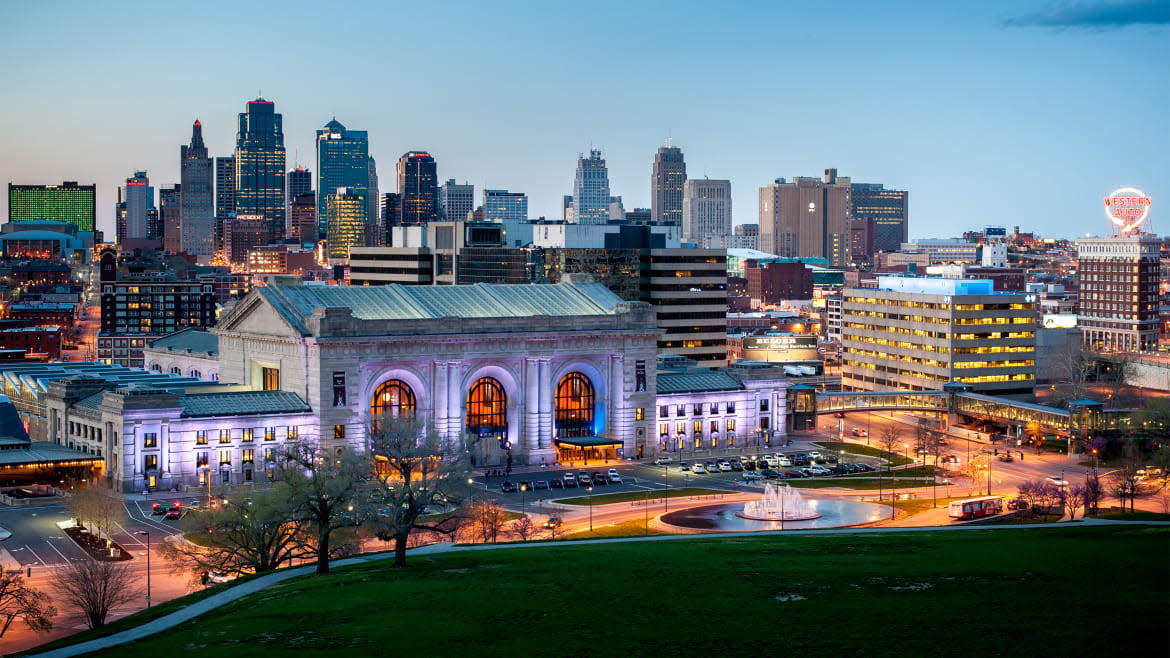
- Oops!Something went wrong.Please try again later.
Where do I begin to convince you of this city’s wonders?
Shall I take you inside the Nelson-Atkins, inarguably one of the best art museums in the country? Or should we start with the food? Or the magnificent homes, or the friendly people? Or, perhaps, I can persuade you to take a closer look at Kansas City by pointing out that my job allows me to go to my favorite cities every year—Paris, Mexico City, São Paulo, Los Angeles, and so on—and, yes, Kansas City is one I always visit.
Now, I usually only stay overnight as Kansas City’s my preferred final stop en route to Colorado. A night in Kansas City checking out a new restaurant, another section of the Nelson-Atkins or some other attraction followed by the nine-hour drive to Boulder is preferable to spending the night somewhere in between. I have my spot, the beloved Crossroads Hotel, which allows pets since the drive is due to our dog. And in the morning I load up on bread and baked goods across the border at the mouth-wateringly good 1900 Barker in Lawrence, Kansas, and hit the road.
A month ago, I got to spend a handful of days in Kansas City as part of our series on underrated destinations, It’s Still a Big World. This time I was flying in, and shortly after arriving at the city’s strange airport—its then-”ingenious” design was for you to drive right up to your gate—I was whisked away to cruise around the city with native son (and one of my favorite authors) Michael C. Kathrens.
While he’s best known for his tomes on the great houses of New York City, Trumbauer, and Newport, Kathrens’ most charming work might be one he published a decade ago, Kansas City Houses. So even though you likely won’t be able to snag him as a guide, his beautiful book is a worthy substitute. Grab a copy, get in a car, and cruise by some of the most magnificent homes in the country.
And, wow, what treasures his book brings out of this city’s neighborhoods.
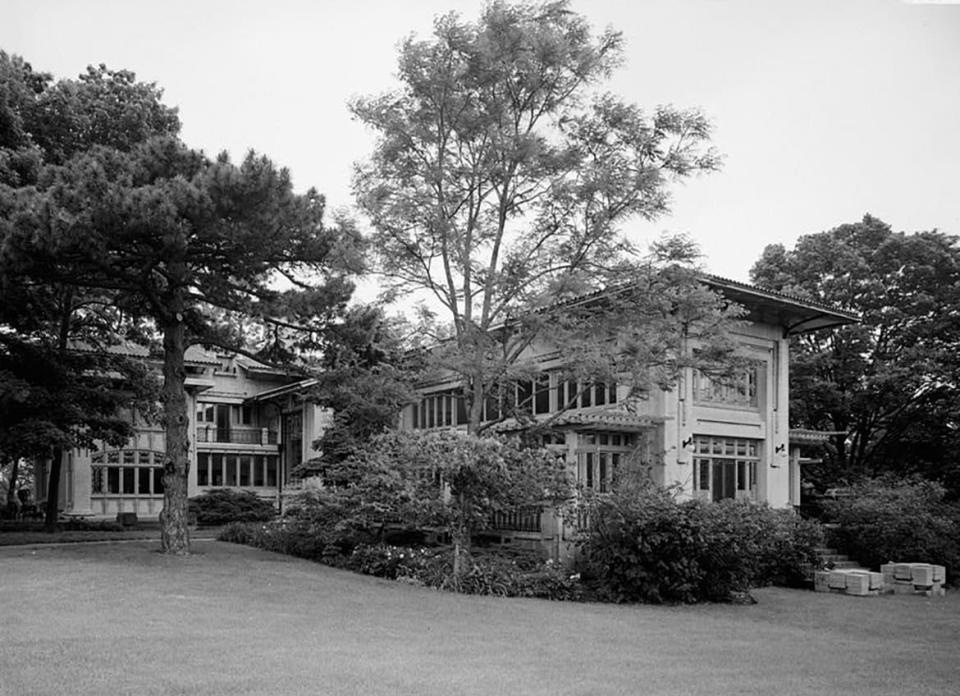
Bernard Corrigan House.
Start with the Scarritt House in northeast Kansas City, a brownstone manse in the chateau-esque style designed by legendary Chicago firm Burnham & Root. You could be forgiven for overlooking it, as it sits in the shadow of the almost terrifyingly large Corinthian Hall, a limestone Beaux-Arts behemoth that now houses the Kansas City History Museum. Cruising neighborhoods like Mission Hills, the Country Club District, or Sunset Hill, the sheer number of mansions will likely be shocking for those unfamiliar with Kansas City’s turn of the last century wealth thanks to cattle, oil, lumber, and rail. But for house lovers, the allure has to be the quality and variety.
Pop over to the Kansas Art Institute to see Marburg, an idiosyncratic Flemish Revival house built by mining magnate August Meyer, who also originated the city’s park and boulevard system. If short on time just stick to the southwestern neighborhoods around State Line Road that separates Missouri from Kansas. Within a mile radius you’ll be able to discover the Mount-Vernon-inspired estate of telecoms heir Hunter L. Gary, the whimsical Italian countryside-inspired villas designed by Mary Rockwell Hook, the Art Deco icon the Bixby House (currently at risk of being torn down), and one of the more unique houses in the U.S., the Vienna Secession and Art Nouveau fusion that is the Corrigan House (currently being renovated. For those with a taste for Midwest history, also in the neighborhood is the restrained French classicist mansion of infamous political boss Thomas J. Pendergast, who launched the political career of Harry Truman.
You likely didn’t think of Kansas City as an excellent destination for aspirational house hunting (compared to the coasts, many of these mansions are “affordable”), but the streets in the wealthy enclaves of this city are an elegant reminder of the good reasons Americans love suburbs–they’re just incredibly nice.
Famished after our house tour, Kathrens and I were eager to eat while we discussed why the Midwest seems to have such a high concentration of Tudor Revival mansions (our theory? A massive horizontal Tudor Revival house doesn’t appear big from the street so you can still seem conservative). So we popped into Lazia, the restaurant housed in Crossroads Hotel. One of the few hotels whose industrial-chic design I bet will last longer than this current trend, Crossroads is at the heart of the eponymous neighborhood abutting the rail lines that is one of a number of downtown-adjacent areas experiencing a boom. Rooms are spacious even by American standards, the rooftop is always a scene, and the service is fantastic.
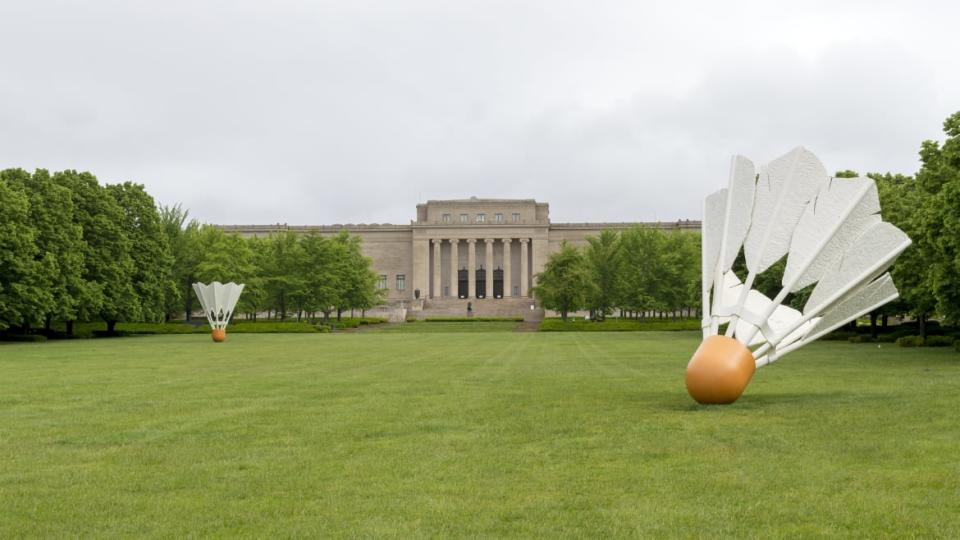
Nelson-Atkins Museum.
While this was a trip to explore beyond what I normally do, I couldn’t help stopping by the Nelson-Atkins Museum of Art, the city’s main art museum. Free to visit, it is a place that serves up its world class collection–Matisse, Caravaggio, Sargent, Benton, Rohlfs, Monet, Brancusi, Durer, Crescent, Imperial Chinese furnishings, and so on–in a remarkably approachable and digestible manner while still being serious enough to satisfy the snobs. Despite its genre-spanning hoard, I’ve never felt the need to take it all in at once, instead focusing on a section and taking it in. Plus, I’ve nearly always had something unique or interesting pointed out to me by one of the docents.
While most major American cities have their version of the Nelson-Atkins, nearly every city and town has what I call mom-and-pop museums. Little spots devoted to something like medical devices or dolls or model trains. They tend to be kooky, dusty, and very hit-or-miss. It’s what I expected when I moseyed over to the National Museum of Toys and Miniatures. Boy, was I wrong. Inside was not only a world-class museum collection with high-end displays, but one of my new favorite museums, period. It was created by Mary Harris Francis, a schoolteacher descended from one of Kansas City’s oldest families, and Barbara Marshall, the daughter of the founder of Hallmark. The first collected toys, and the latter built the largest fine-scale miniatures collection in the world.
I started with the fine-scale miniatures. Naturally, I wondered what makes something a fine-scale miniature as opposed to a dollhouse toy? Essentially it comes down to scale, as the pieces must be made from a ratio to the original object (12:1 being the most popular) and every detail is replicated, meaning pieces take weeks, sometimes years, to make.
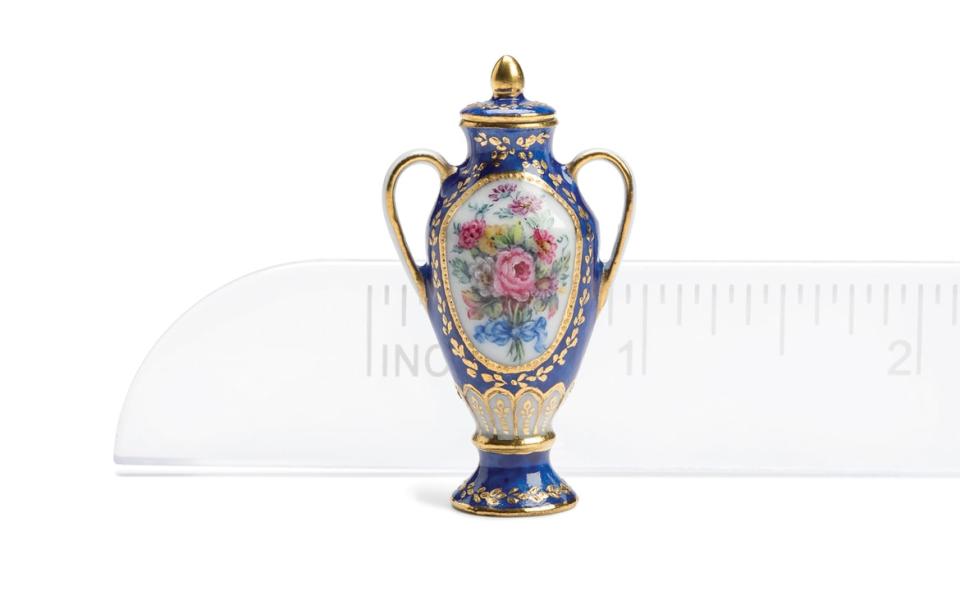
Sèvres Lapis Blue Vase by Miyuki Nagashima.
There are miniatures of 18th century gilded microscopes (burnished with a puppy’s tooth in place of a wolf’s that the original designer used), Bierstadt landscapes, Art Deco jewelry shops with real nearly-microscopic jewelry for sale, and historic rooms like the Studiolo Gubbiolo, Doge Palace entrance, and a Frank Lloyd Wright-designed breakfast room. Questions like “How did they do that?” are answered with displays that simultaneously answer questions and deepen the mystery and wonder associated with these works. There’s even an Operation-esque interactive where you can use tweezers to try to put an eyelash-sized clock hand on the face of a grandfather clock.
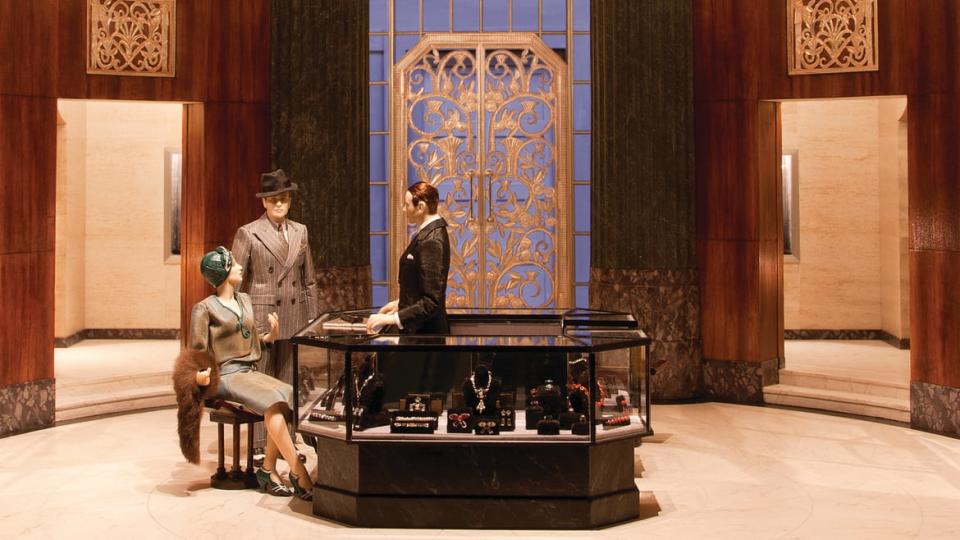
Art Deco Jewelry Store by Kevin Mulvaney and Susie Rogers.
The floor of toys opens with an exercise in family bonding–a hall with the most popular toys by decade. Linger over the items your parents devastated you by not getting, or marvel that they somehow passed their days playing with such primitive objects. From there you’ll wander through galleries that examine the roles toys play, how they’ve been used by societies to create or enforce norms, as well as exhibits on some of the more outrageous ones (think ones that smoke or use offensive stereotypes).
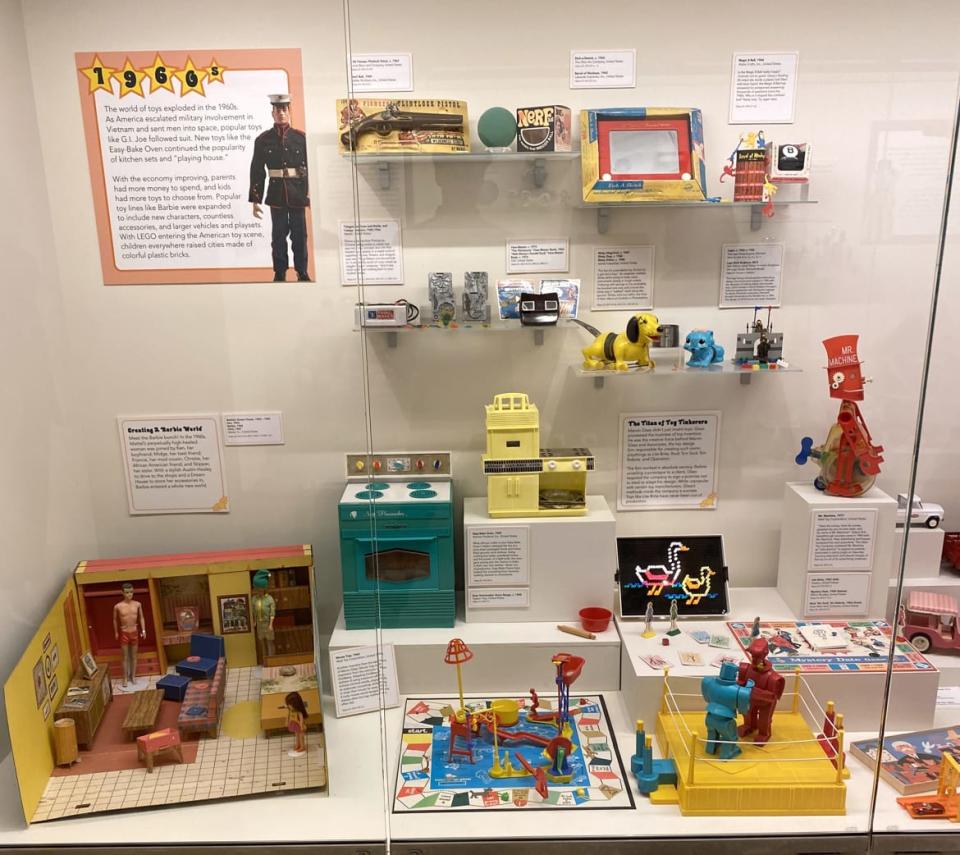
A display case in the hall of iconic toys.
When one thinks of Kansas City, it’s probably barbecue or jazz that come to mind, or maybe the Royals or the Chiefs. It’s certainly not microminiatures or as a center for the art world. But at one point in the 20th century, the sleepily arresting neighborhood of Roanoke here was just that.
Once one of the most renowned painters in the world—his face graced the cover of TIME—Thomas Hart Benton and his work are mentioned less and less when one hears about the “great” American artists. Which is a shame since his works are some of the most emotionally available you’ll ever see up close. “Common art for the common man,” Benton used to say, and his paintings are almost Gothic church-like in the way their message can be immediately understood. Perhaps it’s because he, like Grant Wood or John Steuart Curry, is so American, or even so intentionally provincial that he’s not sexy or cool anymore. It’s fitting, then, that Benton’s home is remarkable mostly for how unremarkable it is for such a groundbreaking artist. Now a museum you can and definitely should visit (the smallest state park in Missouri), almost everything about it seems more fitting for a pediatrician or a local lawyer rather than artist. But it’s a fascinating window into his life, the studio where he died is incredible, and the tour operated by Steve Sitton there is full of neat stories.
On my way back to Crossroads from Benton’s home and studio, I was confronted with a different sort of fretful quandary–the debate over best BBQ in Kansas City. My driver, upon discovering what I do, asked for my favorite. I told him the truth–for years I’ve been going to Joe’s Kansas City, in part because to my unrefined palate it’s delicious and, yes, in part because the millennial in me was a sucker for the whole “it’s in a gas station” vibe. Through gritted teeth he conceded each has their own preferences, but there is no dispute over who has the best beans: Jack Stack, he said, which fortunately was right around the corner from me. Now, my BBQ there was delicious, but upon nearly having a heart attack just from seeing the viscous, rich-looking cup of beans, I realized my taste buds are much less fearless than they used to be.
My last day in one of my favorite cities was spent in a former rival that is now a suburb—Independence, home to President Harry Truman and one of the most Addams-family-esque Second Empire mansions you’ll ever see.
Truman’s house is about what you’d expect, a tidy but nice Victorian house where you can tour the first floor. It’s always funny coming on these kinds of tours because people love to offer their theories for the randomest things and watching polite park rangers work out a polite but accurate response is always a hoot.
The presidential library recently underwent an overhaul and it’s exactly what you’d want in a museum. You’ll walk away with a general understanding of his life, a few nuggets to whip out at a dinner party, and maybe a couple bigger thoughts bouncing around in your head afterward. While all of our political issues always seem insurmountable in the time we’re living them, those on his plate after the war put that in perspective–rebuilding Europe and Japan, Israel, McCarthy, the Rosenbergs, MacArthur, union battles, race, veterans, housing, and on and on.
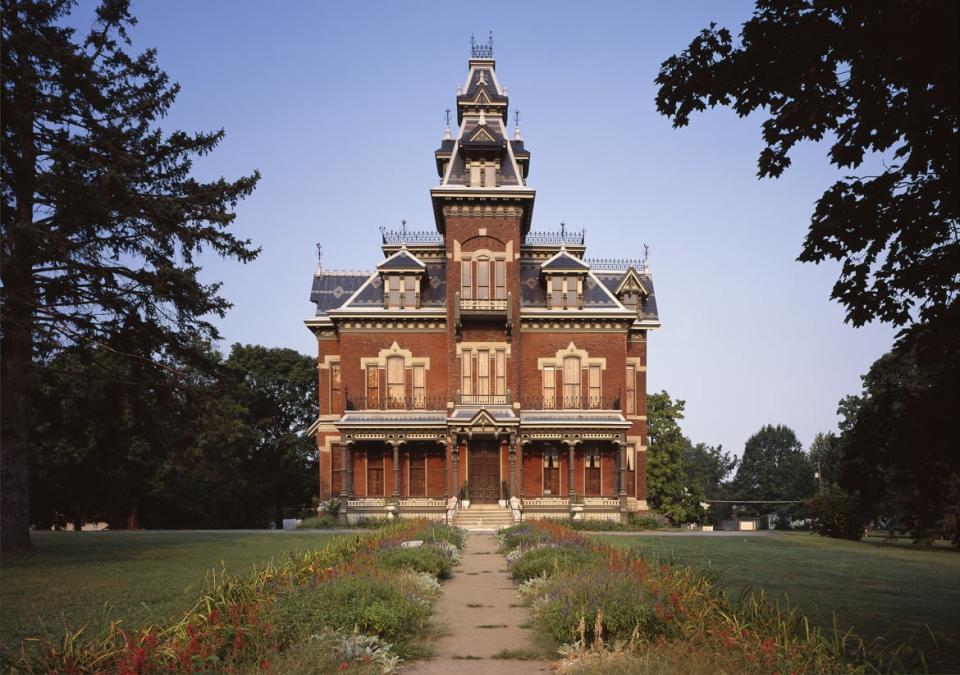
Vaile Mansion, Independence, Missouri.
About half a mile from the library is something seemingly random, the towering Vaile Mansion. It was built in 1881 by the businessman Harvey Vaile whose life upon its completion took a southward turn. He was put on trial twice for defrauding the government and his wife died of a suspected overdose. It changed hands throughout the 20th century, including a stint as a nursing home, but today it’s a house museum dedicated to understanding the life at the time in which the mansion was built and occupied by the Vailes.
It’s a house full of odds and ends from hair art to chandeliers Chester Arthur allegedly thought were too small for the White House. If you’re lucky you’ll have Charlie Beck as your guide as he’s a man who is basically the concept of odds and ends made manifest and the possessor of a gleeful wit. If your eyes linger on an object for more than a couple of seconds, he’ll start to fire off stories and tales about how that object was used. Often, since he grew up without electricity or running water, some of the objects will have been familiar to him or to his family members and he’ll have some tale that sounds awfully tall but it doesn’t matter. Before you know it, you’ve been there two hours.
On my final night in the city I had dinner at Corvino’s Supper Club with Derek Byrne from the city’s tourism board. Over seaweed donuts and fried rice, Byrne asked me what it is about Kansas City, as opposed to other Midwestern metropolises, that I love so much. To deflect, I first noted that anecdotally everybody I’ve ever talked to who has visited has loved it. Then I noted the obvious—it’s a very pretty city and there’s an incredible amount to do. I still hadn’t explored the jazz at places like Green Lady or gone to the Negro Leagues Baseball Museum. The food scene still beckons. But as I tried to articulate the shape of my affection, I realized that what I love most is how Kansas City surprises people. We’ve been conditioned to think of midwestern cities as kind of forlorn places that modernity ravaged, but Kansas City has never felt that way to me. On the contrary, there’s a buoyancy to it. Even the Kansas City Museum, which forthrightly examines the region’s legacies of racism, sexism, elitism, and so on, felt more hopeful than not. There’s nothing eat-your-peas or arduous about visiting here. And I can’t wait to go back.
Get the Daily Beast's biggest scoops and scandals delivered right to your inbox. Sign up now.
Stay informed and gain unlimited access to the Daily Beast's unmatched reporting. Subscribe now.

